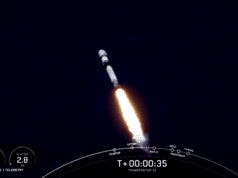India’s space research programme will see greater focus on manned mission initiatives and human space flights during 2008-09.
Signalling the importance of high-end research, Finance Minister P Chidambaram has increased the Budgetary allocation for space research programmes to Rs 4,074 crore, a 23.8 per cent increase over 2007-08.
As much as Rs 1,588.48 crore of the allocation is earmarked for launch-vehicle technology, including the development of Geo-Synchronous Satellite Launch Vehicle (GSLV) and manned mission initiatives.
The government has allotted Rs 100 crore, compared with Rs 2.5 crore in 2007-08, for the development of a fully autonomous manned space vehicle to carry a two-member crew to a distance of 400 km into space.
Another major area that has seen a huge jump in Budgetary allocation is special indigenisation and advance ordering of space research-related products.
The government has proposed to provide Rs 350 crore, as against Rs 13.95 crore in 2007-08, to the Indian Space Research Organisation (ISRO) to interface with the domestic industry to develop various electronic components, materials and chemicals for the space programme. The scope of the scheme also includes procurement of certain long lead and critical items for futuristic missions.
The government has also proposed budgetary support for the plans of the Department of Space to strengthen the National Natural Resources Management System for ensuring optimal management of natural resources by integrating information derived from remote sensing data with conventional techniques.
The plans for developing a semi-cryogenic engine that uses kerosene and liquid oxygen as fuel and oxidiser for future advanced launch vehicle are to also make progress during 2008-09.
The Budget also provides funds for Chandrayaan 1, Indian lunar mission meant to prepare three-dimensional atlas of regions of scientific interest of the moon and chemical mapping of the entire lunar surface for various elements.
Chandrayaan 1 is targeted for launch during 2008 on board the PSLV.




